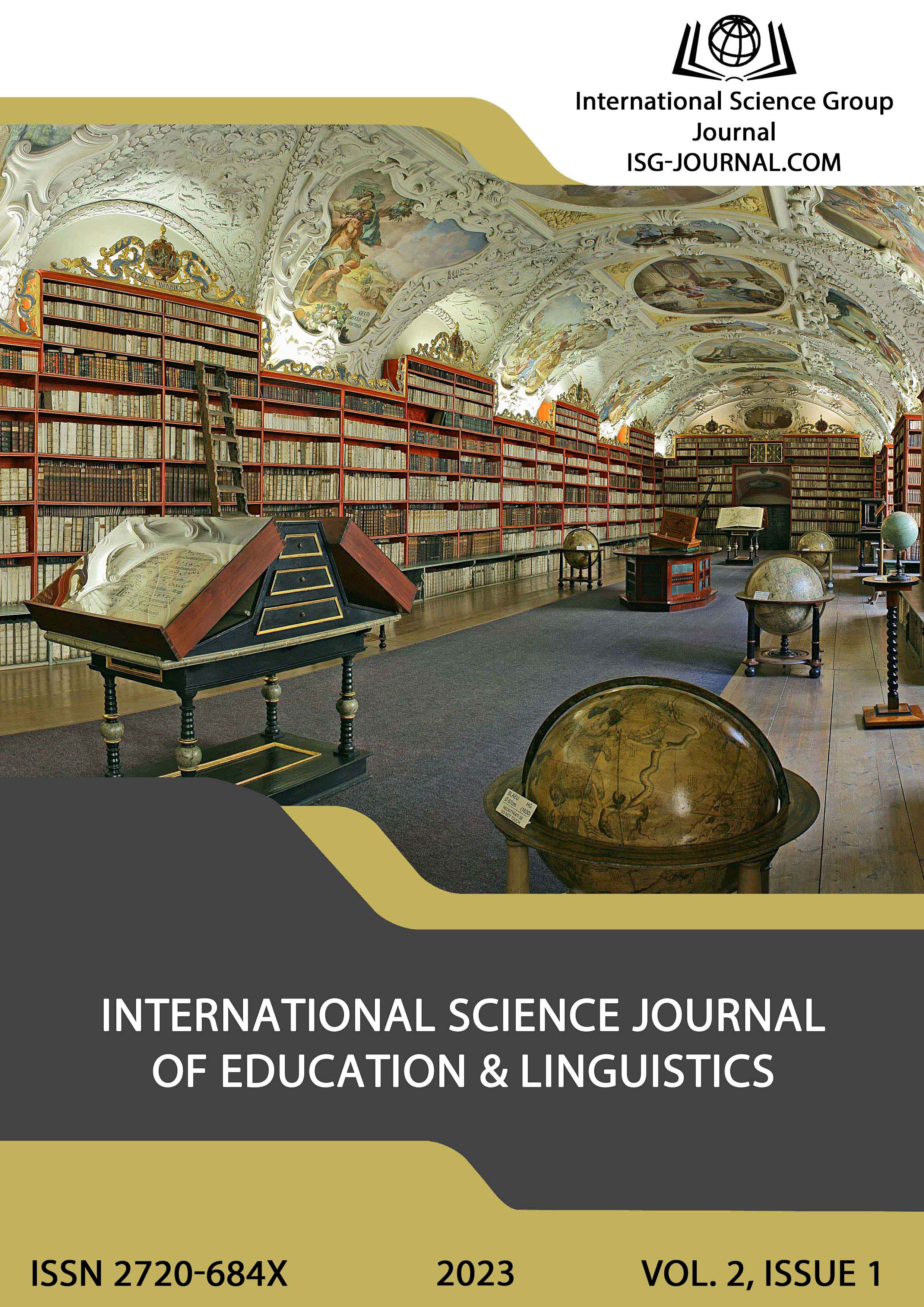Using Kahoot service for conducting interactive surveys of undergraduates
DOI:
https://doi.org/10.46299/j.isjel.20230201.08Keywords:
Kahoot service, interactive surveys, distance learning, information and communication technologies, participants of the educational processAbstract
The article singles out the importance and necessity of the transition of higher education to distance learning, caused by the rapid development of information and communication technologies. Distance learning involves interactive cooperation between the participants of the educational process. Moreover, it implies the active use of computer and telecommunication technologies at different stages of educational activities (during theoretical and practical training, tests and individual work). Nowadays, the use of information and communication technologies in the educational process is realized through online conferences and chats, creating visualizations (presentations, interactive posters, video content), making intelligence maps, working together on an interactive whiteboard, using cloud storage, designing interactive exercises, tasks and polls, etc. Interactive polls play an important role in providing feedback to participants in the educational process. There are a number of online services for conducting surveys and polls, among them the most popular are TestDel, Brambench, Neyron, OpenTEST, Tests Online, MyTest, x-TLS, Kahoot, Plickers, Quizalize, Mentimeter, Nearpod, Google Forms, testing in the MOODLe environment and others. The use of Kahoot service is widespread in the educational process of high school. The advantage of Kahoot service is the simultaneous involvement of fifty participants in the survey, the presence of competition among students during educational games, bright colors and soundtrack. The paper describes the registration procedure on the Kahoot platform. The tools for creating interactive polls are considered, step-by-step sequence of creating surveys for undergraduates is presented. Kahoot service allows you to create three forms of interactive learning tasks: quiz "Quiz" (assessing the level of students' mastery of theoretical material), discussion "Discussion" (organizing a discussion on a particular issue), and survey "Survey" (collecting opinions on a problem).
References
Bilyk, V. (2020) Information technologies in the preparation of future masters of vocational education. Contemporary technologies in the educational process. Monograph (р.42-47) Publishing House of Katowice School of Technology.
Шандра, Р. (2020, 04 квітня) Використання платформи «Kahoot!» для дистанційного навчання. URL: https://osvita.ua/vnz/high_school/73080/
Kahoot! URL: https://kahoot.com/
Жила Г. В.. (2020) Цифрові технології і викладання іноземних мов. Стратегічні напрямки розвитку науки: фактори впливу та взаємодії: матеріали міжнародної наукової конференції, 52-53.
LearningApps.org - interaktive und multimediale Lernbausteine. URL: https://learningapps.org/
Коваленко В. В., Мар’єнко М. В., Сухіх А. С. (2021) Використання цифрових технологій у процесі змішаного навчання в закладах загальної середньої освіти: метод. рекоменд. Київ : ІІТЗН НАПН України, ISBN 978-617-95182-5-6.
Черненко А. В. (2020) Цифрові технології у процесі навчання майбутніх учителів іноземних мов. Педагогіка та психологія, (61), 193–200.
Шишкіна М.П. (2018) Використання хмаро орієнтованих методичних систем у процесі підготовки вчителів природничо-математичних предметів до роботи в науковому ліцеї. Сучасні інформаційні технології та інноваційні методики навчання у підготовці фахівців : методологія, теорія, досвід, проблеми, (56), 121-134.
Спірін О.М. (2013) Критерії і показники якості інформаційно-комунікаційних технологій навчання. Інформаційні технології і засоби навчання, (1), DOI: https://doi.org/10.33407/itlt.v33i1.788
Мар’єнко М. В., Сухіх А. С. (2021) Особливості організації змішаного навчання з використанням цифрових технологій. Освітній дискурс: збірник наукових праць, (32), 45-52.
Рекомендації щодо впровадження змішаного навчання у закладах фахової передвищої та вищої освіти. URL: https://mon.gov.ua/ua/osvita/visha-osvita/rekomendacij-shodo-vprovadzhennya-zmishanogo-navchannya-u-zakladah-fahovoyi-peredvishoyi-ta-vishoyi-osviti.
Коваленко В.В. Використання хмарних сервісів для підвищення кваліфікації вчителів. Обговорення матеріалів конференції «ІІІ Всеукраїнська науково-практична онлайн-конференції «Теоретико-практичні проблеми використання математичних методів і комп’ютерно-орієнтованих технологій в освіті та науці». URL: https://drive.google.com/file/d/1kZokuhuCnVNw2zOTDKOypcFtm2Cl6pEq/view
Литвинова С.Г. (2021) Використання засобів і сервісів хмаро орієнтованих систем у процесі навчання і професійного розвитку вчителів: аспект доповненої реальності. Науковий вісник ужгородського університету. серія: «Педагогіка. соціальна робота», 2(49), 97-102.
Литвинова С.Г. (2021) Засоби і сервіси хмаро орієнтованих систем відкритої науки для професійного розвитку вчителів ліцеїв. Науковий вісник Ужгородського університету. Серія: Педагогіка. Соціальна робота, 1 (48), 225-230.
Синхронне й асинхронне дистанційне навчання URL: https://www.pedrada.com.ua/article/2924-sinhronne-y-asinhronne-distantsyne-navchannya.
Downloads
Published
How to Cite
Issue
Section
License
Copyright (c) 2023 Вікторія Білик, Пан Ахмед Аль-Нашар

This work is licensed under a Creative Commons Attribution 4.0 International License.





